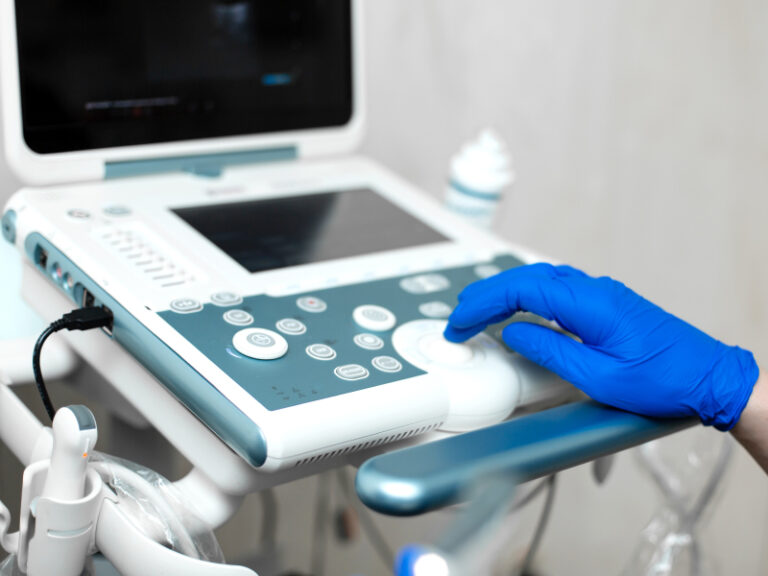Author: Dr. Bhavana Girish
Qualification: M.B.B.S, M.S (OBG), DNBE, Advanced Training in High-Risk Obstetrics, Fellowship in Reproductive Medicine (FNB) Fertility tests for women Fertility tests for women begin with a general physical exam and extend up to a regular gynaecological exam. There are special fertility tests designed to check the cause of female infertility. Few of these tests along with female fertility test procedures are highlighted here.
Ovulation testing: This test is done to confirm ovulation. It makes use of temperature charts, ovulation predictor kits, blood tests, and ultrasound. The blood test is done to measure the hormone levels that determine if the woman under examination is ovulating or not.
Ovarian function tests: The ovarian function tests are designed to analyze the functioning of hormones during the ovulation cycle. These include the measurement of follicle stimulating hormones and estradiol on the third day of the menstrual periods. An ultrasound might be done to confirm ovulation and a blood test for determining the levels of inhibin.
Luteal Phase testing: This test evaluates the progesterone levels and other hormones. It is a more extensive way of testing hormones like luteinizing hormones, follicle-stimulating hormones, Estradiol, progesterone, prolactin, and others. The leutal phase testing thus involves hormone blood tests like the oestrogen level test.
Note: Ovulation testing, ovarian function tests, and luteal phase test are the parts of the ovarian evaluation, which is a significant part of the test for female fertility.
Hysterosalpingography: This test evaluates the condition of the uterus and fallopian tubes. It looks for blockages or other problems. The test is done with the help of an X-ray contrast that is injected into the uterus.
Ovarian reserve testing: This test determines the number of eggs available for ovulation. The test analyzes ovulatory hormones as well as pituitary hormones that control the reproductive processes.
Imaging tests: Hysteroscopy and laparoscopy: Hysteroscopy makes use of a thin, lighted device to detect abnormalities in the uterus that remain undetected during an ultrasound. The device is inserted into the cervix in this process. On the other hand, laparoscopy is a minimally invasive surgery. It involves making a small incision beneath the navel to insert a thin viewing device that examines the fallopian tubes, ovaries, and uterus. Laparoscopy is done for identifying endometriosis, scarring, blockages, and other irregularities in the fallopian tubes and uterus.
Endometrial biopsy: Endometrial biopsy is done by scraping a small segment of tissue from the endometrium before menstruation. It is recommended based on the situation and is performed to determine if the endometrial lining is thick enough for a fertilized egg to implant in and grow.
Cervical mucus tests: Cervical test involves bacterial screening and a post-coital test (PCT). It determines if the sperm can penetrate and survive in the cervical mucus.
Ultrasound tests: This test is used to assess the thickness of the lining of the uterus (endometrium). It helps to monitor ovarian follicle development and to check the condition of the uterus and ovaries.
Hysterosalpingogram (HSG): HSG test can be defined as an x-ray of your uterus and fallopian tubes. In this process, a dye is injected through the cervix into the uterus and fallopian tubes. This dye detects any type of blockage in the uterus.
Conclusion
While all these tests are conducted to check on female infertility, they vary from patient to patient. To be more specific, all the above-mentioned tests shall be recommended based on the condition of the patient. Fertility experts and gynecologists might recommend a healthy woman to go for a blood test only while an unhealthy woman might have to undergo a series of tests to detect the underlying cause of fertility.However, the fact that remains common to all these tests includes the first step i.e analysis of the medical history and a discussion on other topics like birth control use, menstrual and pregnancy history, past medications, and more. This step is followed by preliminary testing and then special testing is done. In a nutshell, all types of female infertility tests are a part of a long series of appointments and discussions and are completely based on the condition of the patient.
Motherhood Fertility & IVF Center has created a reputation for itself with high success rates for helping couples’ cuddly dreams of cradling little ones in their arms. Established and operated by a team of committed and experienced professionals with access to the best of technology, Motherhood Fertility & IVF Center follows stringent protocols to ensure delivery of treatment in a conducive, safe, and supportive environment.
Consult with our leading fertility specialists who are experts in their domain, ably supported by an experienced team of embryologists and clinicians.
happiness with India’s
Trusted Fertility Chain
Need help? Talk to our fertility experts.
Had an IVF Failure? Take a Second Opinion.
